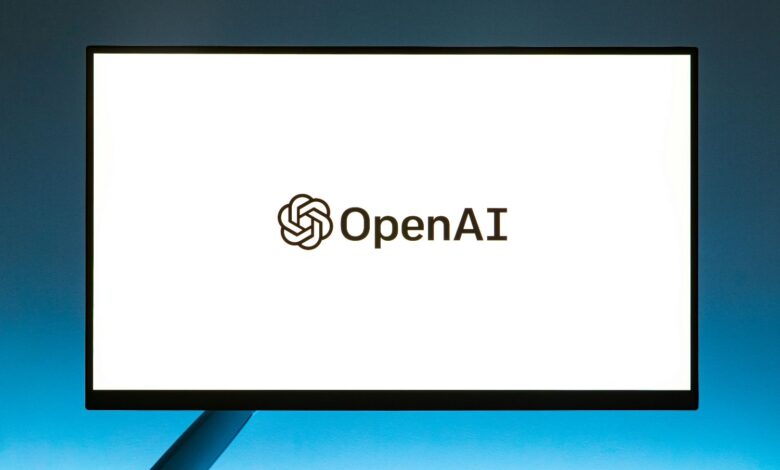
72% of organizations say that they now use AI for at least one business function – McKinsey
From automating repetitive workflows to predicting customer behavior, AI is reshaping how businesses operate, compete, and grow. For decision-makers, founders, and digital leaders, integrating AI is a must in order to survive and thrive.
In this blog, we’ll explore how AI is driving transformation across industries, the smart ways to adopt it, and what forward-thinking leaders need to know about staying ahead in the AI-powered economy.
1. The Rise of AI-Native Thinking in Business
Gone are the days when AI was limited to R&D departments or tech giants.
Today, AI is baked into everything from customer service and logistics to finance and hiring.
Instead of asking, “Should we use AI?”
The better question is: “How can we design our business strategy with AI at its core?”
This mindset shift from AI as a tool to AI as an enabler marks the beginning of true transformation. Businesses that build with AI, not just on top of it, are outpacing the competition in speed, personalization, and operational efficiency.
2. AI for Operations: Automating What Slows You Down
One of the most immediate wins from AI is process automation.
WorkMarket reports that employees estimate a potential time saving of 240 hours per year through task automation, while business leaders estimate 360 hours.
From small startups to large enterprises, AI can:
-
Automate admin-heavy tasks like data entry, scheduling, and reporting.
-
Optimize supply chain logistics by predicting demand and reducing waste.
-
Streamline customer service using intelligent chatbots and natural language processing.
Take the example of Beam’s Magic Notes, which helps social workers by recording, transcribing, and summarizing client meetings into case notes saving over 8 hours per week. This isn’t just about efficiency; it’s about giving humans more time for meaningful work.
The same principle applies to your business. Ask: What repetitive tasks are slowing your team down? That’s your AI entry point.
3. Using AI for Strategic Decision-Making
AI doesn’t just automate… It amplifies insight.
A recent Gartner survey revealed that 79% of corporate strategists believe AI, automation, and analytics will be the key drivers of business success over the next two years.
With the rise of machine learning, companies can now make data-driven decisions faster and with more confidence. This includes:
-
Forecasting customer churn before it happens.
-
Predicting inventory needs across seasons.
-
Prioritizing high-value leads based on behavioral signals.
-
Segmenting customers with laser precision.
AI tools like predictive analytics and decision intelligence platforms are helping C-level teams spot opportunities and risks long before they become obvious. Think of it as business radar.
4. AI in SEO and Marketing: Smarter, Faster, More Targeted
Nowhere is AI’s impact more evident and profitable than in digital marketing and SEO.
Firstly, SEO for example has evolved to intent-driven optimization. AI tools are now capable of:
-
Analyzing SERP patterns to predict what content ranks.
-
Identifying keyword gaps your competitors are missing.
-
Generating meta descriptions, titles, and even schema markup at scale.
-
Creating topic clusters based on user search intent.
Tools like Clearscope, Surfer SEO, and MarketMuse use machine learning to guide on-page optimization in real time. Add ChatGPT or Claude into your workflow, and you can brainstorm outlines, build FAQs, or generate alternative headlines in seconds.
Secondly, Generative AI is empowering brands to deliver hyper-personalized content across multiple channels; email, blogs, social media, and ads.
Instead of guessing what message will land, AI models can:
-
Analyze your audience’s previous interactions.
-
Tailor messaging and visuals by persona.
-
A/B test variations in real time.
-
Adjust campaign creatives based on live performance data.
In short: AI is turning guesswork into strategy.
Thirdly, ad platforms like Meta, LinkedIn, and Google already use AI behind the scenes. But smart marketers are using tools like Pattern89, Copy.ai, and Jasper to:
-
Generate variations of ad copy and visuals.
-
Predict which combinations will perform best.
-
Create automated customer journeys based on user behavior.
And with AI-driven attribution modeling, you can finally stop debating what touchpoint “gets the credit.”
5. AI for Talent and Team Enablement
AI isn’t just for customers… It transforms internal teams too.
Hiring: AI can screen resumes, detect hiring bias, and even conduct initial assessments via chatbot interviews. Using AI reduces the average cost of hiring a candidate by 71% and increases recruiter efficiency by up to three times, according to research by CogX.
Training: Personalized learning paths driven by AI are replacing one-size-fits-all L&D.
Employee Experience: AI-driven sentiment analysis can help HR teams understand team morale and act on insights faster.
Empowering your team with AI tools boosts both productivity and retention — especially when AI handles the busywork and humans focus on high-impact tasks.
6. Responsible AI: Building Trust While You Scale
As AI becomes more embedded in business operations, trust becomes a non-negotiable pillar.
Your customers want to know:
How is their data being used?
Is the AI decision-making fair and unbiased?
Can humans still intervene if something goes wrong?
A responsible AI strategy includes:
-
Transparent data policies.
-
Regular model audits.
-
Human-in-the-loop design (where AI assists but doesn’t fully decide).
-
Consent-based data collection, especially in sectors like healthcare and finance.
Businesses that bake ethics into their AI approach will build lasting trust and avoid future compliance headaches.
7. How to Start Your AI Business Strategy (Without Overwhelm)
Starting with AI doesn’t require a huge budget or a data science team. Here’s a roadmap to begin:
Step 1: Identify Bottlenecks
Where is your business losing time or missing opportunities? Is it lead follow-up? Customer onboarding? Content creation?
Step 2: Audit Your Data
Do you have clean, accessible data? If not, fix that first.
Even the best AI can’t work with garbage inputs.
Step 3: Choose the Right Use Case
Start with one high-impact use case. Focus on quick wins like:
-
Automating client reports.
-
Personalized email nurturing.
-
AI-assisted customer support.
Step 4: Test & Learn
Use no-code AI tools (Zapier AI, ChatGPT, Synthesia, Jasper) to experiment. Run pilot programs before scaling.
Step 5: Scale Responsibly
Once proven, integrate AI into core workflows. Document results, train your team, and scale with ethics in mind.
Becoming an AI-First Business
AI-first businesses don’t just use AI they think with it.
In the next 3–5 years, we’ll see companies:
Embed generative AI in product experiences (think: Notion AI, Canva Magic).
Use predictive AI to inform every go-to-market decision.
Automate entire business units using AI orchestration platforms.
Create real-time, dynamic customer experiences driven by first-party data and AI personalization.
AI isn’t here to replace creativity, strategy, or leadership, it’s here to amplify it.
The AI revolution is here.
The only question is whether your business is ready to be a follower or to lead in it.




